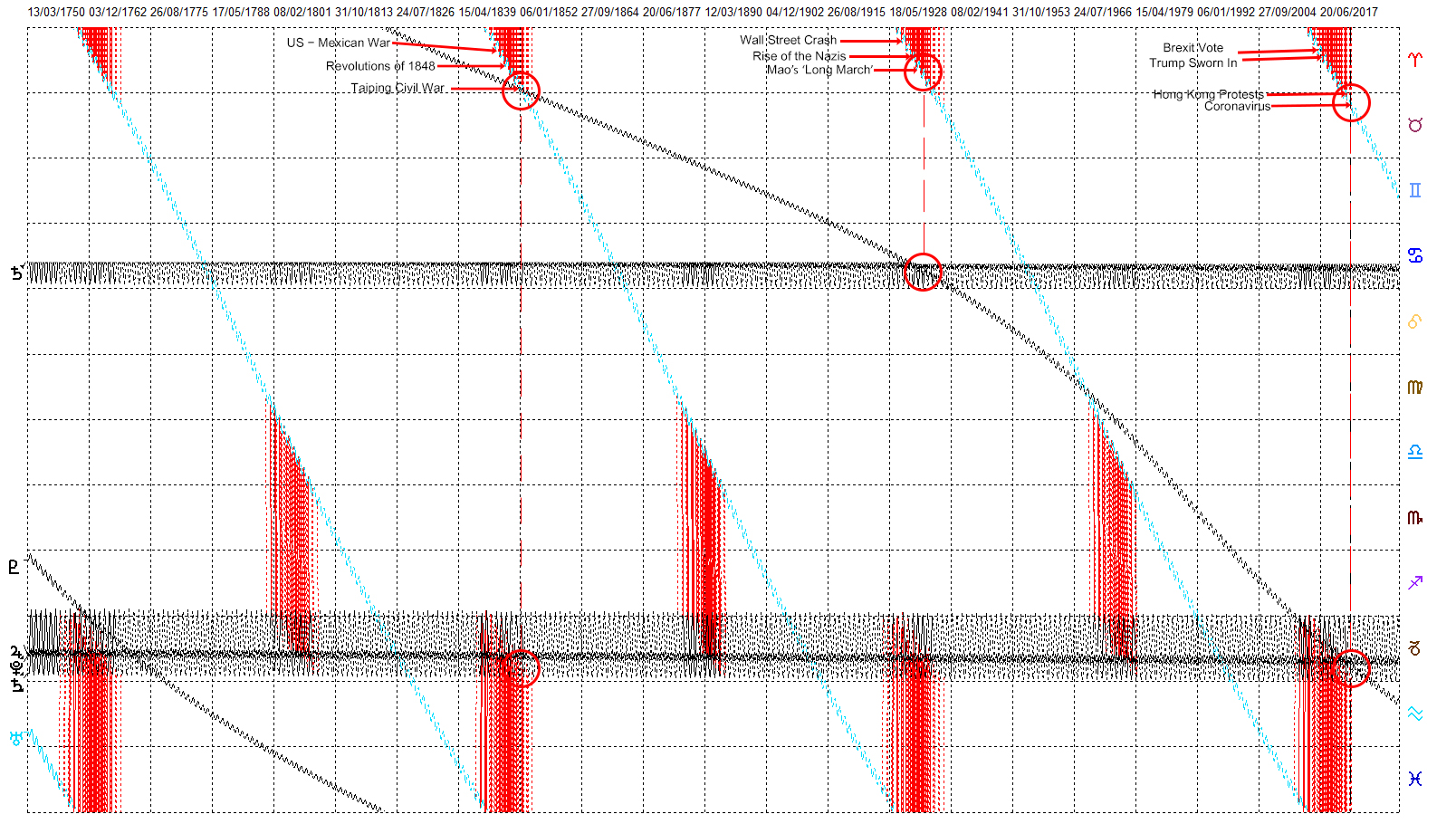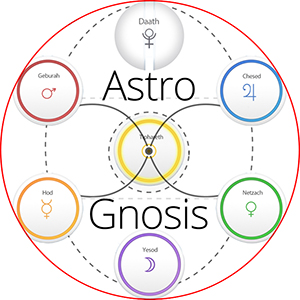The historic cycles of Uranus square to the Cancer / Capricorn planetary nodes.
The old ways are tenacious and we like to cling to them as hazy, long forgotten bed fellows; we ascribe fond memories to them to compensate for the hard reality that is the passage of time. As with age, we grow fond of our thread bare blanket not because it is perfect and new (because obviously, by definition, it is not) but because it is familiar, comfortable and therefore loved; we have a history to it. And because of this history we settle into comfortable patterns of thought, for better or for worse, clinging to ideas of the good old days, even if they weren’t at the time. In fact, at the time, we were probably relating that present moment to another time, and so we perpetuate the past, continually using it as a measure for the present. This is a sentiment echoed in The Idea of Decline in Western History, where Arthur Herman describes how “virtually every culture past or present has believed that men and women are not up to the standards of their parents and forebears.” In this cultural mentality of paranoid pessimism, everything we hold dear is always under siege from radical ideas that could potentially destroy us.
And so it is with Uranus in Aries in square aspect to the nodes of Jupiter, Saturn and Pluto in Cancer and Capricorn. The challenge of how to accommodate the dawning realisation of the new into our established social, cultural and political systems erupts from the collective unconscious to disturb, disrupt and dismember all that we hold dear. The counter to this, of course, is resistance and in equal measure to the disrupting influence.
Uranus in Aries emphasises the new to such a point that the collective Will rises in resistance to the impending change, as a terrifying new vision unfolds. The momentous resistance to the new becomes even more apparent in Taurus. Indeed, some of those visions are terrifying and need resisting simply for the sake of our humanity. Uranus in Aries fragments, factionalizes and splits societies both physically and ideologically. The quirky Uranian energy of dramatic reversals and surprising outcomes, when combined with the instinctual need for a new vision to carry us forward, to cut through the pretence of tired political rhetoric and social mores, has immense and lasting repercussions for us all. The square to the Capricorn/Cancer nodes denotes the political, structural and cultural upheaval bought about through unusual, and somewhat impulsive collective choices made during this time. Uranus in Aries favours the underdog, acting as a window of opportunity for unusual results, and therefore corresponds to minorities, persecution and letting our guard down.
A historical context of Uranus in Aries
The Manchu Qing dynasty (1636 – 1911) was the last imperial dynasty of China and was ruled by an ethnic minority (only two percent of the entire population of China was Manchu) and organised to maintain superiority over the vastly more numerous Han Chinese of the conquered Ming Dynasty.

Originally invited into China in 1644 to help quell a rebellion, the Manchu armies remained in the Beijing capital and implemented policies of rule which initiated a civil war that lasted until 1683, killing an estimated 20 million people. It seems that where China is concerned, the vast scale of the country is matched in terms of the scale of destruction upon the populace, as is evidenced again during the Taiping rebellion of 1850.
The Weakened State
By the 19th century, Manchu rule had weakened sufficiently enough to lose a war against the British Empire. The Treaty of Nanking (Nanjing), which ended the First Opium War (1839–1842), was the first of what the Chinese later called the unequal treaties, whereby the Chinese people suffered a century of humiliation (1840 – 1950).
With gross inequality rife across China, many believed the time had come to place the rule of China in Chinese hands once more. The Treaty of Nanking simply compounded an already pro-Chinese, anti-Manchu feeling, that had grown out of the neglect of the corrupt ruling class to tend to the needs of their people. “Farmers were heavily overtaxed, rents were exorbitantly high, and peasants were deserting their lands in droves. These problems were only exacerbated by a trade imbalance caused by the large-scale illicit import of opium. Banditry was becoming more common, as were secret societies and self-defence units, all of which led to an increase in small-scale warfare.” A series of natural disasters, droughts and famines had swept across the country and governing policies not only facilitated the events but failed to offer any relief or aid in their aftermath. With resentment towards foreign ideas and people now streaming into China without hindrance, the “well meaning but ineffective” Manchu Emperor Tao Kuang had lost the respect of his people.
Post war Germany
We see a similar picture in post WW1 Germany where unemployment and massive inflation, prompted by the huge national debt caused by war reparations, contributed to civil unrest and a feeling of having been betrayed by the ruling elite. History is written by the victors and the legacy of the 1919 Treaty of Versailles was no different. Named the diktat (a dogmatic decree) by the German people, this ‘unequal’ treaty contributed to the rise and motivation of German National Socialism.
Like a weakened immune system that fails to fight off viral infection, it was in this climate of civil unrest, where a “lifetime of savings would no longer buy a subway ticket,” that the seeds of racial hatred found fertile soil in the national, political and economic humiliation of a nation in upheaval. Although brief respite came in the 1920’s with a more realistic payment schedule of war reparations, the Great Depression of 1929 portended the “radical solution” to “the destroyed world” of the post war Modernist Renaissance. With the collapse of the Coalition Government, the new values and meanings, the new hope that the Modernist sought to replace the rejected tradition, came clothed in the ambiguous form of a political party intentionally set on appealing to every level of society through the cultivation of the idea of a (toxic) national pride that emphasised division and blame through the tools of propaganda and terror (perpetrated by their own ‘self-defence’ unit, the SA or Brown Shirts). This cultural virus masquerading as national pride looked to the historical racial concept of the Aryan race to enforce racial hygiene and give credence to a policy of indoctrinating its youth with, a so called, “healthy hatred” for the Jews.
The madness of Hong Xiuquan
In 1840’s Southern China, where Manchu rule had never been strong, there arose a movement out of a secret society headed by the self proclaimed brother of Jesus, and therefore the defacto son of God, Hong Xiuquan. This dissatisfied village school teacher and street preacher had repeatedly failed the imperial examination to become a scholar-official in the civil service. Becoming ill from the stress of his failure, he fell into a coma in which he experienced mystical visions. From his studies with an American southern Baptist minister he created his own version of the Christian doctrine and set about gathering support for his mission to overthrow the wicked Manchu regime. This re-visioning of traditional Chinese Shangdi, with its fusion of Christianity, Daoism, Confucianism and indigenous millenarianism, developed into a dynamic new Chinese religion: Taiping Christianity.

At the heart of the Taiping philosophy was the aim to reinstate a golden era, albeit a fantastical and glamorised utopia. The Taiping Heavenly Kingdom sought to rid the world of “demons and establish paradise on earth by overthrowing the ruling Manchus, and through a wholesale transformation and reformation of the state.”
In order to establish his Heavenly Kingdom, Hong employed a Christian theology of apocalypse to launch his rebellion. Using Old Testament style justice he proceeded to bring law and order to the otherwise bandit ridden and corrupt landscape, attracting a demoralised and desperate populace to his army of believers with his charismatic teachings and messages of common purpose set against the elite ruling minority.
The ensuing war has been estimated to have cost the lives of at least 20 million souls but many believe it to be more, given the nature of the wholesale slaughter. It’s thought that at least 30 million people fled the conquered regions to foreign settlements or other parts of China. The devastation and loss of life in the Yangtze Valley alone left the once-fertile area a desert for the next one hundred years. It ranks as one of the bloodiest wars in human history, the bloodiest civil war, and the largest conflict of the 19th century. An entire society became factionalized as a result.
The repetition of themes
China has a long history connected to this aspect. Later, at the time the Nazi’s were gaining power in the West, Mao Tse-tung was undertaking his ‘Long March’ (the exodus of his communist people) to flee the Kuomintang army. Like Moses leading the Israelites out of Egypt, these archetypal themes occupy significant places in our global cultural consciousness, regardless of religious orientation, and are often utilised by unscrupulous leaders, intent upon forcing their vision on an unwitting populace.
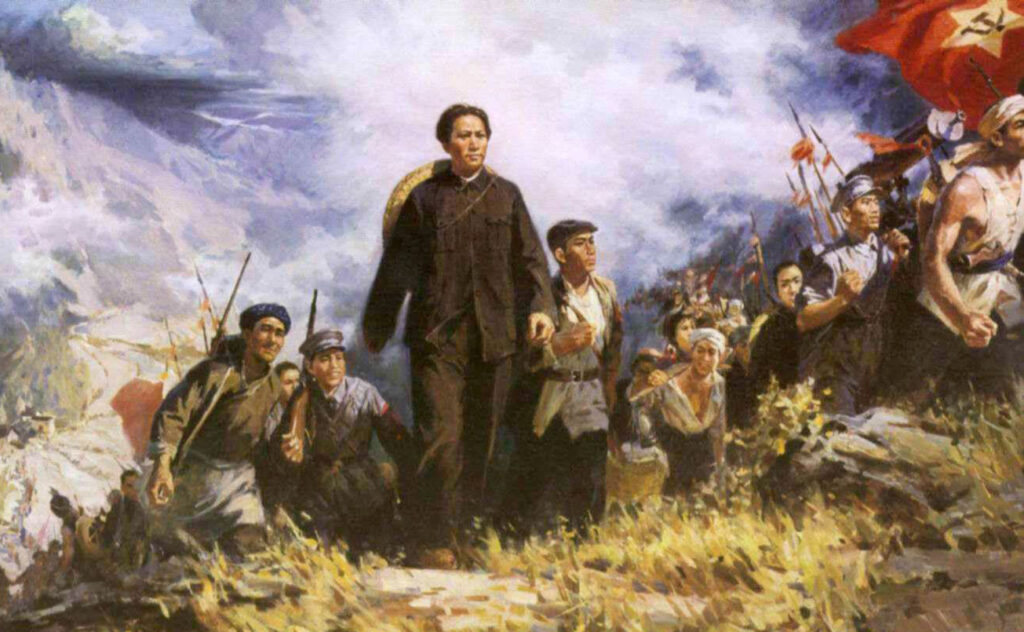
In fact, the entire first half of the Chinese Civil War occurred under the square of Uranus in Aries to the Jupiter/Pluto/Saturn nodes in Capricorn/Cancer.
The conflict erupted on 1st August 1927 with Uranus conjunct Jupiter in the early degrees of Aries and stalled on 26th December 1936 when the Kuomintang leader Chiang Kai-shek was forced into an uneasy alliance with his communist foes to fight off a Japanese invasion. With the Japanese defeat following the Hiroshima atom bomb, hostilities resumed when Uranus had reached its own volatile north node in Gemini in 1946 and finally came to an end with a communist victory in August 1950 as Uranus came to the conjunction within the ‘range’ of Jupiter’s north node in Cancer. Incidentally and more importantly, this Uranus entering Cancer placement is evident in the endings of a number of major conflicts. Most notably, it was present at the end of the War of the Grand Alliance in 1697, the Treaty of Paris which ended the American War of Independence in 1783, the Taiping Civil War in 1864 and the US Civil War in 1865 in addition to the Chinese Civil War. When viewed on a graphic timeline, the scale of this realisation becomes powerfully evident (see below).
What made the Taiping civil war so bloody?
The inclusion of Pluto into the mix – joining Uranus in its square to the nodes of Jupiter, Saturn and Pluto: the turmoil of a deep collective ‘cleansing’ of socio-political structures; the upheaval of traditional forms of rulership; a compulsive need for change via a doctrine of division and a naive adherence to war mongering autocratic figures; an urgent and impatient need to uproot the prevailing social and political establishment erupts from the collective unconscious (with unforeseeable and dire consequences); the desire to re-formulate the old ways based upon an idealistic vision of a social, cultural and political ideology; the manipulation of the masses through the ideal of perfection; the forceful application of an ideological ‘truth.’
Another aspect to consider is the large scale application and wide availability of rifles, muskets, pistols and artillery aided by developments in weapons manufacturing since the Industrial Revolution, which occurred under the previous occupation of Uranus in Aries in the 1760’s.
Enter the United States
Uranus was in Aries during the Seven Years War (1756 – 1763) which involved all five European great powers and spanned five continents. This decade also saw the British attempt to control and consolidate their holdings with unfair trade policies in America, which ultimately contributed to the ongoing civil unrest that gave rise to the War of Independence.
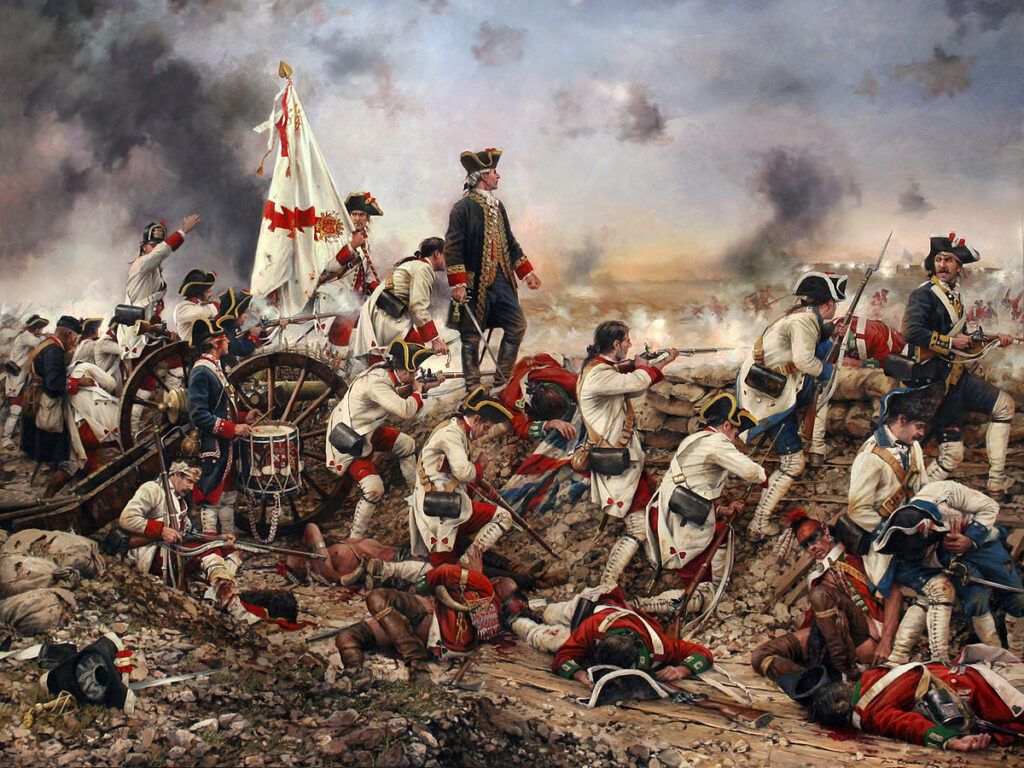
That war, of 1775, has astrological correlations with the American Civil War of 1861. Both occurred under the early transit of Uranus through Gemini and, of course, the Declaration of Independence that marks the birth of the nation, occurred with Uranus at 8 degrees Gemini; and hence the Civil War marked the nation’s Uranus return. Eighty years on, and the US dropped the first atomic bomb on Hiroshima with the next Uranus transit through Gemini (Uranus was 3 degrees away from the Gemini cusp when the US was forced into the Second World War with the bombing of Pearl harbour by the Japanese in 1941). With these last two events Uranus was both inconjunct the nodes of Pluto and conjunct its own north node. It appears that this aspect impels the US to take some form of drastic and revolutionary action, as if embedded into the very DNA of the Declaration. I mention this here because of recent similarities in global shifts of power during the Uranus Aries transit leading up to the 2025 ingress into Gemini.
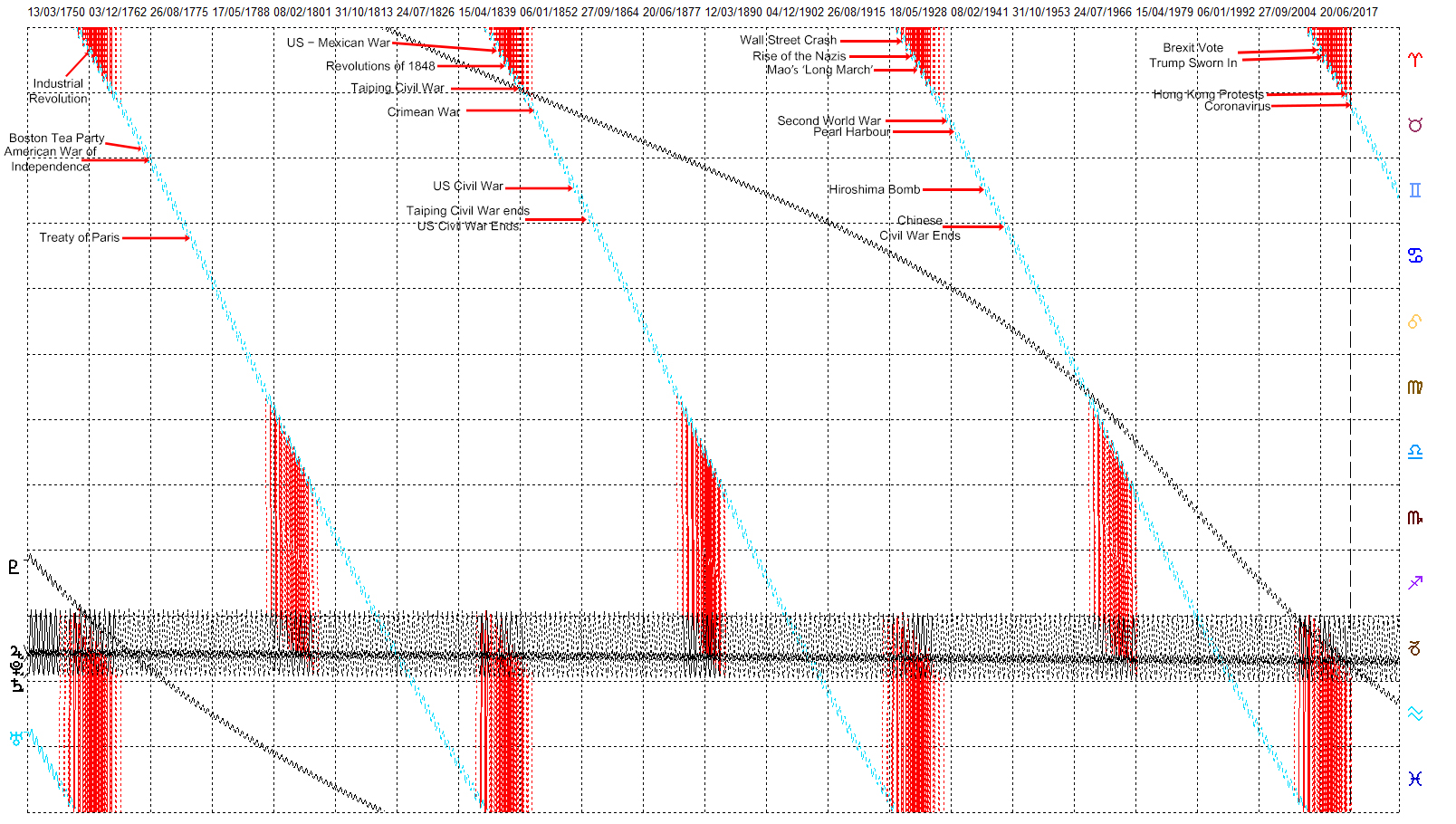
(Updated 1st April 2020 to include Coronavirus).
Recent events
The most recent movement of Uranus through Aries was from 2012 – 2019.
In 2016 the British people were won over, and divided, by a political campaign built upon recent immigration issues and a desire to be separate from European control, where the ‘winning,’ and somewhat older majority, wished for a nostalgic “return to the old ways.” There has been widespread dismay and accusations of blatant lies by unscrupulous politicians, utilising technological advances in social media tools to aid in the gross manipulation of the British public; something that also occurred in the US. In the United States, Donald Trump successfully built his campaign upon the economic anxieties and social resentments of the white working class with the promise to make America Great Again, finding his own scapegoats in ‘unrestrained’ immigration across the US-Mexico border. That Mexico has been highlighted again during this transit reveals the inextricable link between location and planetary placements: Uranus was in roughly the same place when the US-Mexican War kicked off in 1846.
Towards 2025
Whilst there has been much interest and commentary on the recent Saturn and Pluto in Capricorn alignment, the civil unrest that occurs with Uranus in Aries square to this point, clearly has global significance resulting in social and political upheaval with consequent division and movement of entire populations. I’ve only hinted at the displacement of people resulting from conflicts and economic inequality. These ‘cleansing periods’ of political and social unrest of Uranus in Aries sow the seeds for what occurs later during the Uranus transit through Taurus and Gemini, emphasised and prone to escalation through additional planetary contacts.
In 19th century China, the “influx of strange new things had started an unsettling movement, away from the old ways of the ancestors and into the Western sphere of influence.” The attempts of the Taipings to end this unrest and to reinstate a golden era are similar in many ways to the Communist attempts one hundred years later during Mao’s Cultural Revolution. “After the Taiping Rebellion, China would never again be a realm unto herself. With the failure of the Taiping movement, the age of the emperors was finished.”
Today, Hong Kong now resists the established state control of a tired and outworn government system that clings to its vestiges of power by suppressing the intrinsic freedom and rights of its people. If we are to draw anything from these astrological insights it is that change will occur regardless; nothing is permanent, but it takes vision and bold action to bring in the new – whether ultimately for good or bad.
We are drawing near to the Uranus Gemini ingress (2025) and whilst it’s unlikely that many of the current leaders of democracies will be in the same positions of power to see in this fateful aspect, it’s intriguing to see if humanity has developed enough to prevent the escalation of world conflict and to not be blindsided by the vision of a few powerful lunatics. I’m not particularly optimistic. It seems that humanity needs to repeat these cycles of cleansing and renewal and, as evidence from very recent events suggest, this looks set to continue.
Uranus in Cancer – to end on a positive note
After the War of Independence there followed a period of optimism for the newly formed United States, for their new found and hard won freedom away from British tyrannical policies. And likewise, after the appalling Civil War (which remains the most bloody conflict engaged in by the US), the Reconstruction Era marked a period of hope and healing and remains a significant chapter in the history of American civil rights. Both periods are significant for the transit of Uranus into Cancer in conjunction to the north node of Jupiter – the birth of new hope, a new appreciation of homeland and new laws for the protection of civil rights. Likewise, in China, following 23 years of internal strife, Uranus through Cancer starting in 1949 heralded a period for the establishment of new meaning, a bold new vision with the birth of the Communist regime. The devastation in Europe as the main theatre of war was much greater but no less hopeful as the freedom from the terror of imminent death saw an explosion in the population. Whatever transpires during the Gemini transit of Uranus, perhaps we can remain hopeful for the 2032 ingress into Cancer.
2020 Update
With the ever present reality of the present global pandemic, much has been said about the Saturn Pluto conjunction and their relationship to past pandemics. Much less has been said about the planetary nodes of those planets. With the upcoming release of Mark Jones’s book on planetary nodes, with much of the research being conducted by yours truly, I thought I would point out the overwhelming evidence for the importance of planetary nodes which strengthen the case for my article. Here’s the same illustration as posted above but with the inclusion of the movement of Pluto during the times when Uranus was square to the nodes of Saturn and Pluto.
When looking at these larger historic time scales I don’t look for exact aspects, but trends in behaviour between the aspects as demonstrative of significant collective movements. I treat the birth chart for these collective events as a snap shot of an ongoing process. As Richard Tarnas has observed in Cosmos and Psyche, these cultural shifts often coincide with much larger, or extended, orbs of aspect (15-20 degrees) and due to the collective nature of planetary nodes we can certainly consider them as major players during times of significant cultural shifts.
The key observation in the graphic below is this: At each successive Aries transit by Uranus, Pluto has been either conjunct or square to its own and Saturn’s planetary nodes. (At the American war of Independence, Uranus was long past its transit of Aries, as if waiting for Pluto’s transit over the South Node of Saturn for the seeds of unrest to erupt into the collective consciousness).
I have omitted one significant fact that is in need of more research: the planetary nodes of Chiron appear to be implicated in multiple instances involving extreme events. They appear to act as a catalyst for escalation as evidenced in severe droughts, floods and man-made disasters. Chiron’s south node is situated between 26 Aries and 3 Taurus!
